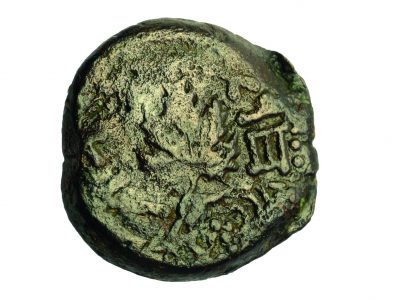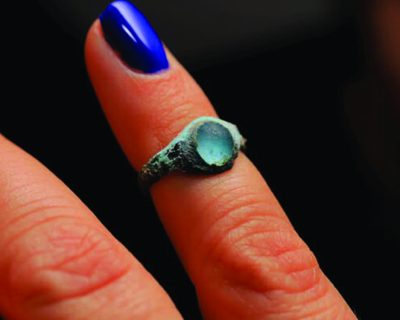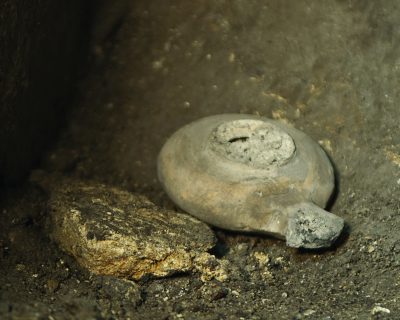×


We have detected your country as:
Please click here to go to the USA website or select another country from the dropdown list.
by: Kathy DeGagne, BFP Staff Writer
“That is where the tribes go up—the tribes of the LORD—to praise the name of the LORD according to the statute given to Israel.” (Psalm 122:4 NIV)
It was described as the beating heart of Jerusalem—a place of bustling commerce, braying donkeys, chattering children playing hide-and-seek among the robe-clad legs of pilgrims; a politician bellowing his message from a raised dais and, sitting on the steps at its base, a blind man begging for alms.
Two thousand years ago, these scenes of daily Jewish life would have played out on a broad-stepped roadway leading up to the Temple Mount. On the great feast days, the place would have been even busier.
Josephus, the Jewish historian, wrote that as many as 2.7 million pilgrims crowded into Jerusalem during the three annual feasts of Passover (Pesach), the Feast of Weeks (Shavuot) and the Feast of Tabernacles (Sukkot). During the feasts, pilgrims were to “go up” (aliyah l’regel) to Jerusalem to worship. Archaeologists have now uncovered the stepped roadway that allowed pilgrims to literally climb up to the Temple.
The massive stones of the road were polished smooth by millions of sandaled feet coming from the Pool of Siloam (a mikveh or ritual bath), where pilgrims bathed and then ascended on the roadway. Doron Spielman, vice president of the Ir David (City of David) Foundation, explained the phenomenon of aliyah l’regel. “Men, women and children, families from all the tribes of Israel were taking this route, including Gentiles…They went up in a state of purity, to the sounds of the flute, fruit in their hand, with offerings, and there they prayed” (cityofdavid.org.il).
The discovery of the Pilgrimage Road has been called one of the greatest archaeological finds of all time. Spielman explained the importance of the discovery: “Rome has the Colosseum, Egypt has the pyramids, and now Jerusalem has the Pilgrimage Road. Millions of people walked here in the past and millions of people will walk here again in the future as they experience their history with their eyes, with their feet and most importantly with their hearts” (cityofdavid.org.il).
As centuries passed, the city of Jerusalem was razed and rebuilt again and again by various conquerors. The ancient road, a victim of Jerusalem’s violent past, was buried and long forgotten until its discovery in 2006. The road and two other archaeological finds beside it were discovered entirely by accident. In 2004, city workers accompanied by archaeologists were investigating a sewage leak in a potato field at the foot of the City of David. As they excavated, archaeologists discovered the Pool of Siloam. The pool was the size of two Olympic pools, large enough to serve the masses of people who converged on Jerusalem during the feasts. That led to the discovery of a large drainage channel that served the Temple Mount during the Second Temple period. Above the drainage channel, archaeologists unearthed the stepped Pilgrimage Road. Excavation of the roadway began in earnest in 2013 and the southern half of the road was officially opened on June 30, 2019.
 The road was almost 26 feet (8 m) wide and stretched 2,100 feet (650 m) from the pool to the Temple Mount. It was built between AD 20–30 by the infamous Roman procurator of Judea, Pontius Pilate, during the time of Jesus (Yeshua). It was likely there that Jesus healed the blind man mentioned in John 9.
The road was almost 26 feet (8 m) wide and stretched 2,100 feet (650 m) from the pool to the Temple Mount. It was built between AD 20–30 by the infamous Roman procurator of Judea, Pontius Pilate, during the time of Jesus (Yeshua). It was likely there that Jesus healed the blind man mentioned in John 9.
Six years of arduous excavation by the Israel Antiquities Authority (IAA) cost several hundred million dollars, as tons of debris and soil were painstakingly removed and sifted. Excavation of its entire length is expected to be complete in a few years. The 382-yard-long (350-m) portion already excavated was reinforced with steel beams and arches to ensure the safety of the present-day southeastern neighborhood of Silwan located above the excavation.
Though m uch of the roadway was undamaged, some of the flagstones showed evidence that they were violently torn up during the Jewish Revolt (AD 66–70). In the drainage channel, cooking pots containing food were found, indicating that the rebels had gone underground to escape the Roman forces scouring the city. There was, however, no escape and thousands of Jews were slaughtered beneath the roadway.
uch of the roadway was undamaged, some of the flagstones showed evidence that they were violently torn up during the Jewish Revolt (AD 66–70). In the drainage channel, cooking pots containing food were found, indicating that the rebels had gone underground to escape the Roman forces scouring the city. There was, however, no escape and thousands of Jews were slaughtered beneath the roadway.
Some artifacts uncovered paint a poignant picture of the last moments of the Jewish population before their city was destroyed: an oil lamp left by someone in hiding, stone projectiles from a Roman catapult, a ring inlaid with a precious stone and an ornate table in fragments that may have belonged to wealthy Jewish families running for their lives.
 Thousands of coins were also discovered, minted during the revolt by Jerusalem’s last surviving Jews, inscribed with the moving words, “For the Freedom of Zion.” As the desperate inhabitants of Jerusalem watched their city devoured by flames, they envisioned a future when Jerusalem would once again be free.
Thousands of coins were also discovered, minted during the revolt by Jerusalem’s last surviving Jews, inscribed with the moving words, “For the Freedom of Zion.” As the desperate inhabitants of Jerusalem watched their city devoured by flames, they envisioned a future when Jerusalem would once again be free.
Ze’ev Orenstein, director of international affairs for the City of David, explained to Breaking Israel News: “Even though the battle against Rome seemed hopeless at the time, the Jews believed, hoped and prayed that one day their descendants would return to Jerusalem and find these coins. They wanted us to know that they lived and died for a free Jerusalem.”
The importance of the Pilgrimage Road is inescapable: it proves, beyond a doubt, the historic Jewish connection to the city of Jerusalem. The soldiers of the victorious Roman legions likely had no inkling the Jewish state would rise again after they defeated it so decisively. It is a testimony to the faithfulness of the God of Israel and the tenacity of His people that the State of Israel has been reestablished with Jerusalem as its united and undivided capital, fulfilling their dream of 2,000 years to be a free people in the land of Zion and Jerusalem.
All logos and trademarks in this site are property of their respective owner. All other materials are property of Bridges for Peace. Copyright © 2024.
Website Site Design by J-Town Internet Services Ltd. - Based in Jerusalem and Serving the World.